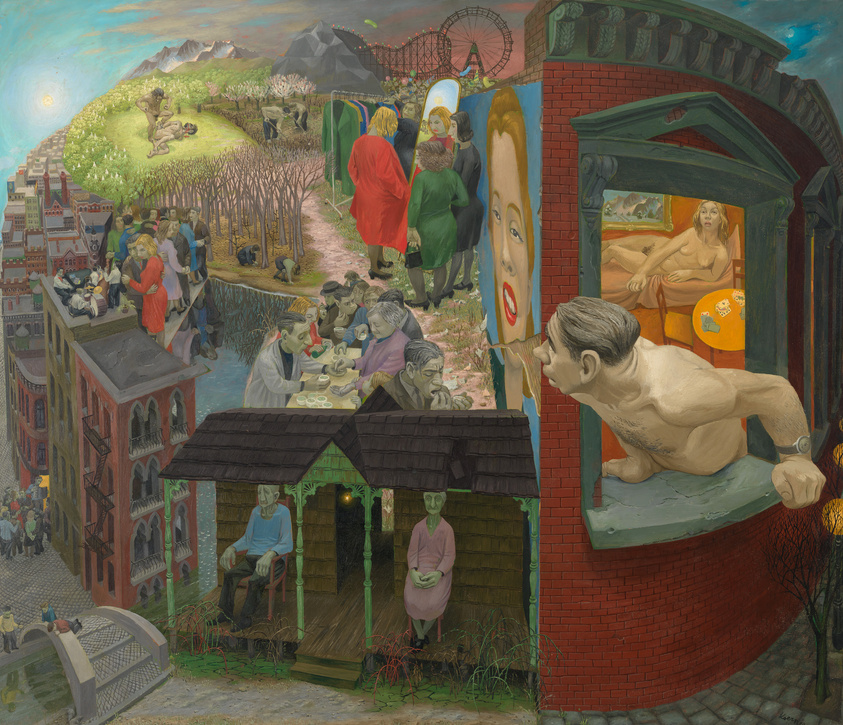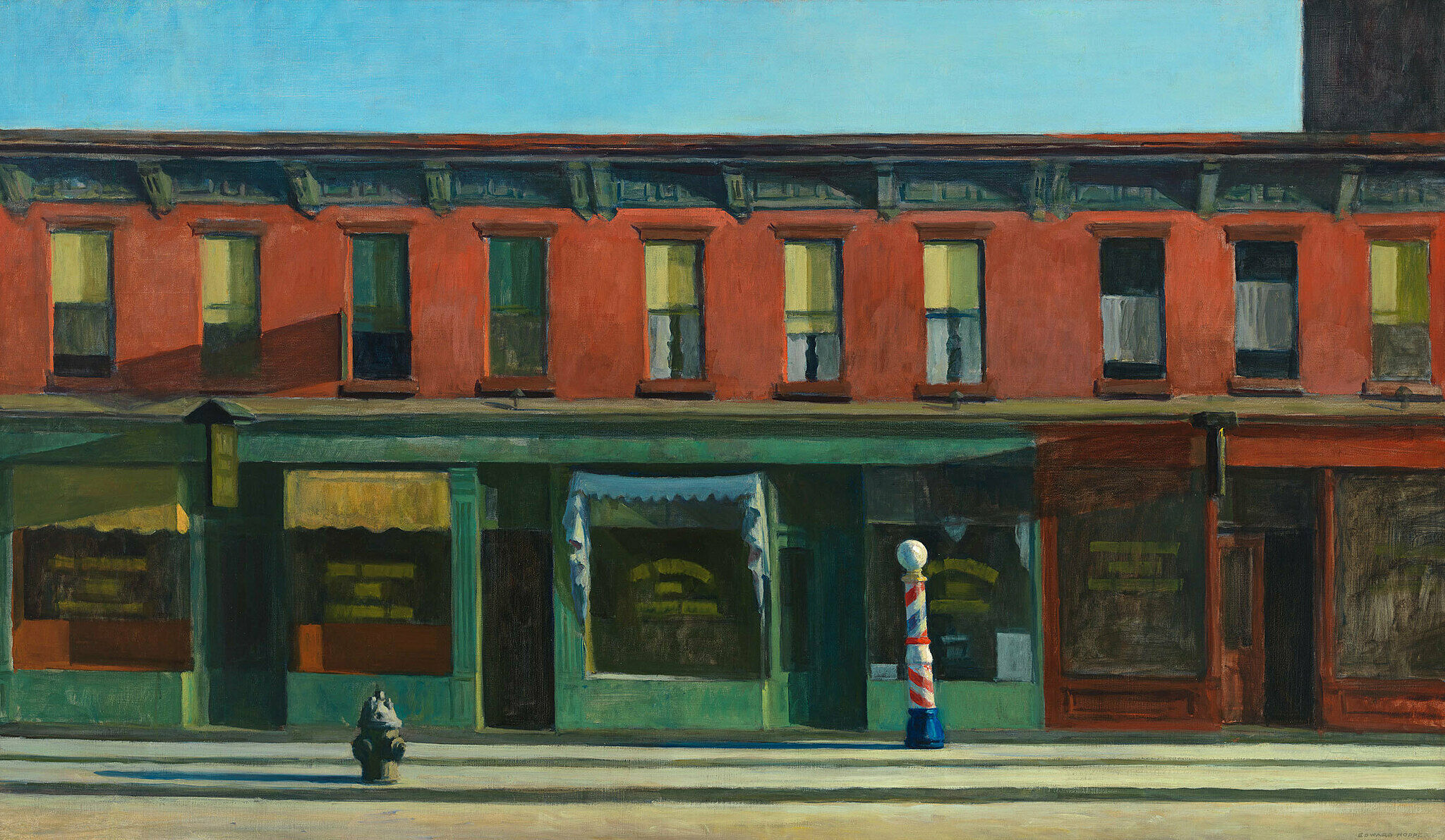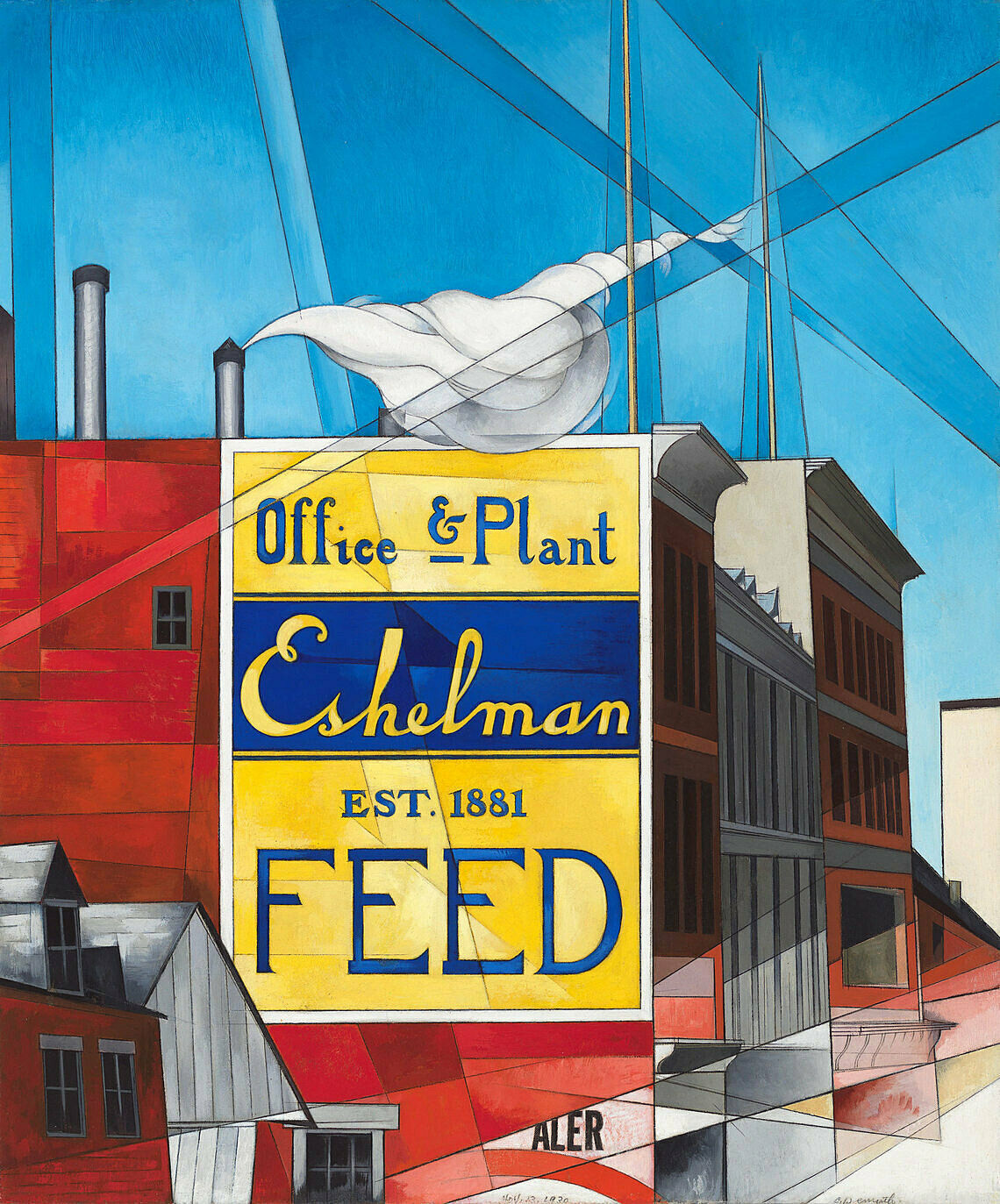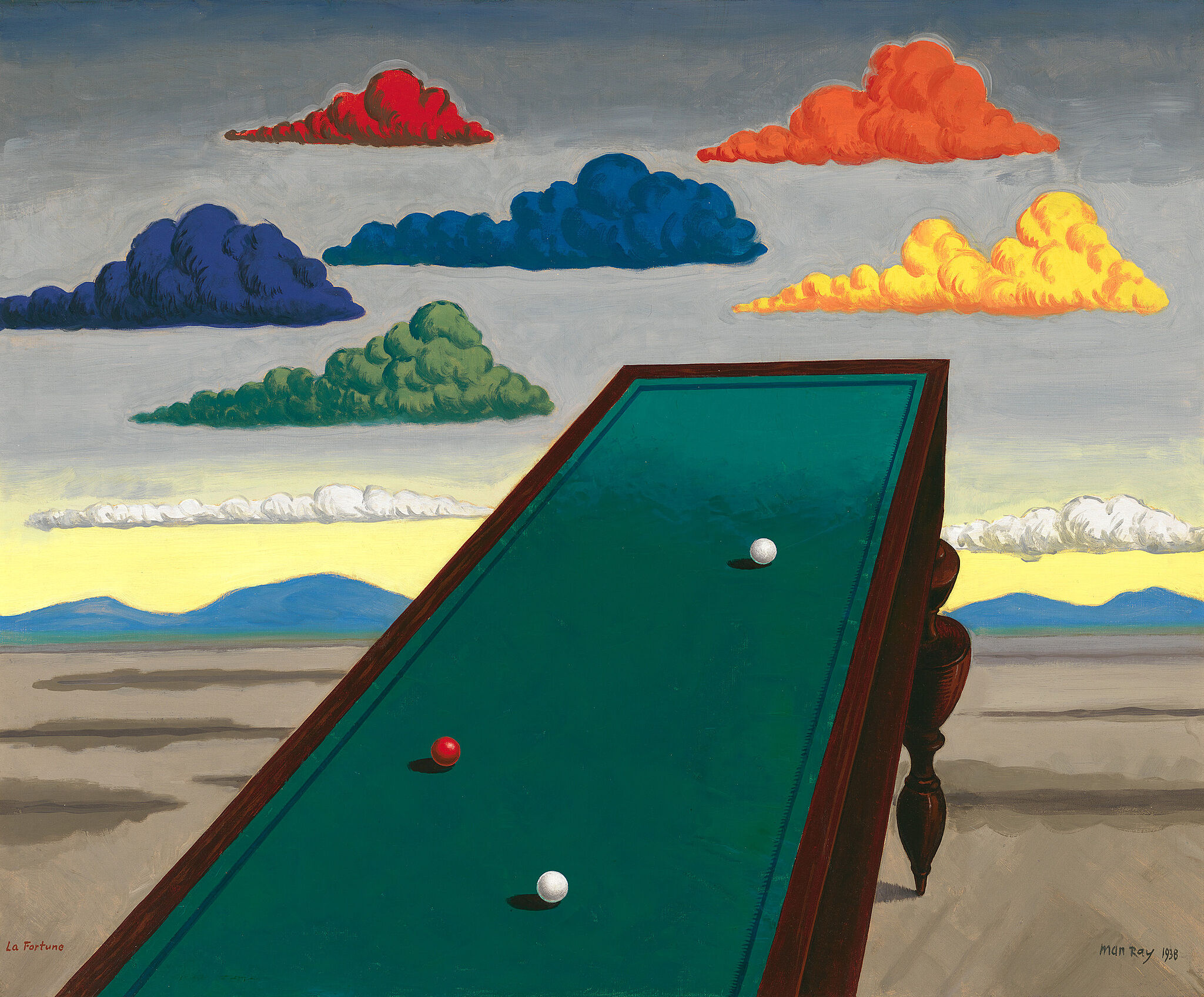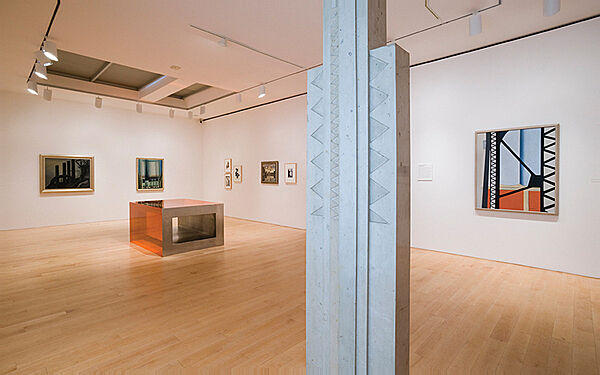Not on view
Date
1946
Classification
Paintings
Medium
Oil on composition board
Dimensions
Overall: 36 × 42in. (91.4 × 106.7 cm)
Accession number
48.2
Credit line
Whitney Museum of American Art, New York; purchase
Rights and reproductions
With permission of the Estate of Henry Koerner
Audio
-
0:00
Henry Koerner, Mirror of Life, 1946
0:00
Narrator: On the right-hand side of Henry Koerner’s Mirror of Life, a nude man peers out a window at the spectacle of the world. Joseph Leo Koerner, the artist’s son and a professor of art history at Harvard University, describes the role of the man.
Joseph Leo Koerner: His leaning gesture—which I know my father spent a lot of time getting right—is there to sort of combine the interior scene of everyday life and of the erotic life of a person with the exterior world in which everything that can go on in life is encapsulated, from eating and buying clothes to leisure pursuits, like dancing.
In the far distance in the scene of a man killing another man—probably Cain killing Abel—one is given a sense that whatever one sees is not just everyday life but it's sort of everyday life raised to a slightly higher magnitude.
In the middle ground you see people picking up bits from a treeless forest. And that's a little abbreviated version of the Vienna woods.
But at the same time, there are obviously references to the cityscape of New York in the style of buildings, the South of the United States in the scene of the old man and woman sitting on the porch.
Narrator: The references to New York and Vienna—as well as the sense of anxiety that pervades the painting—have their roots in Koerner’s own life.
-
0:00
Henry Koerner, Mirror of Life, 1946
0:00
Narrator: Koerner, who was Jewish, was born in Vienna, and had to flee when the Nazis invaded. He was the only member of his family to survive the war. He came to New York, but returned to Europe during the war as part of the U.S. Army. Later, in 1946, he visited his native city and found that the building where he’d grown up had been destroyed. He painted Mirror of Life that same year.
-
Henry Koerner, Mirror of Life, 1946
In Where We Are (Spanish)
0:00
Henry Koerner, Mirror of Life, 1946
0:00
Narrador: A la derecha de Mirror of Life, de Henry Koerner, un hombre desnudo se asoma por la ventana para contemplar el espectáculo del mundo.
Joseph Leo Koerner, hijo del artista y profesor de Historia del Arte en la Universidad Harvard, describe el papel de la figura masculina.
Joseph Leo Koerner: Su postura inclinada —sé que mi padre dedicó mucho tiempo a lograr representarla correctamente— sirve para ligar, de alguna manera, la escena interior de la vida cotidiana y la vida erótica de una persona con en el mundo exterior, en el que todo lo que puede ocurrir en la vida se encuentra encapsulado, desde comer y comprar ropa hasta las actividades de ocio, como el baile.
A la distancia, en la escena de un hombre asesinando a otro –probablemente Caín matando a Abel–, el espectador siente que lo que ve no es sólo vida cotidiana, sino una especie de vida diaria elevada a una magnitud ligeramente superior.
En el plano central, se observan personas recolectando en un bosque de árboles deshojados. Es una versión abreviada de los bosques de Viena.
Sin embargo, al mismo tiempo, vemos claras referencias al paisaje urbano de Nueva York, por el estilo de los edificios, y al sur de los Estados Unidos en la escena en la que vemos a una pareja de ancianos sentada en el porche.
Narrador: Las referencias a Nueva York y Viena —así como la sensación de ansiedad que impera en la pintura— tienen sus raíces en la propia vida de Koerner. Para escuchar sobre su vida, oprima el botón de “play” [AB2].
-
Henry Koerner, Mirror of Life, 1946
In Where We Are (Spanish)
0:00
Henry Koerner, Mirror of Life, 1946
0:00
Narrador: Koerner, que era judío, nació en Viena y tuvo que huir cuando los nazis invadieron la ciudad. Fue el único miembro de su familia que sobrevivió a la guerra. Llegó a Nueva York, pero regresó a Europa durante la guerra como miembro del ejército de EE.UU. Más tarde, en 1946, visitó su ciudad natal y descubrió que el edificio donde había crecido había sido destruido. Ese mismo año pintó Mirror of Life.
Exhibitions
Installation photography
-
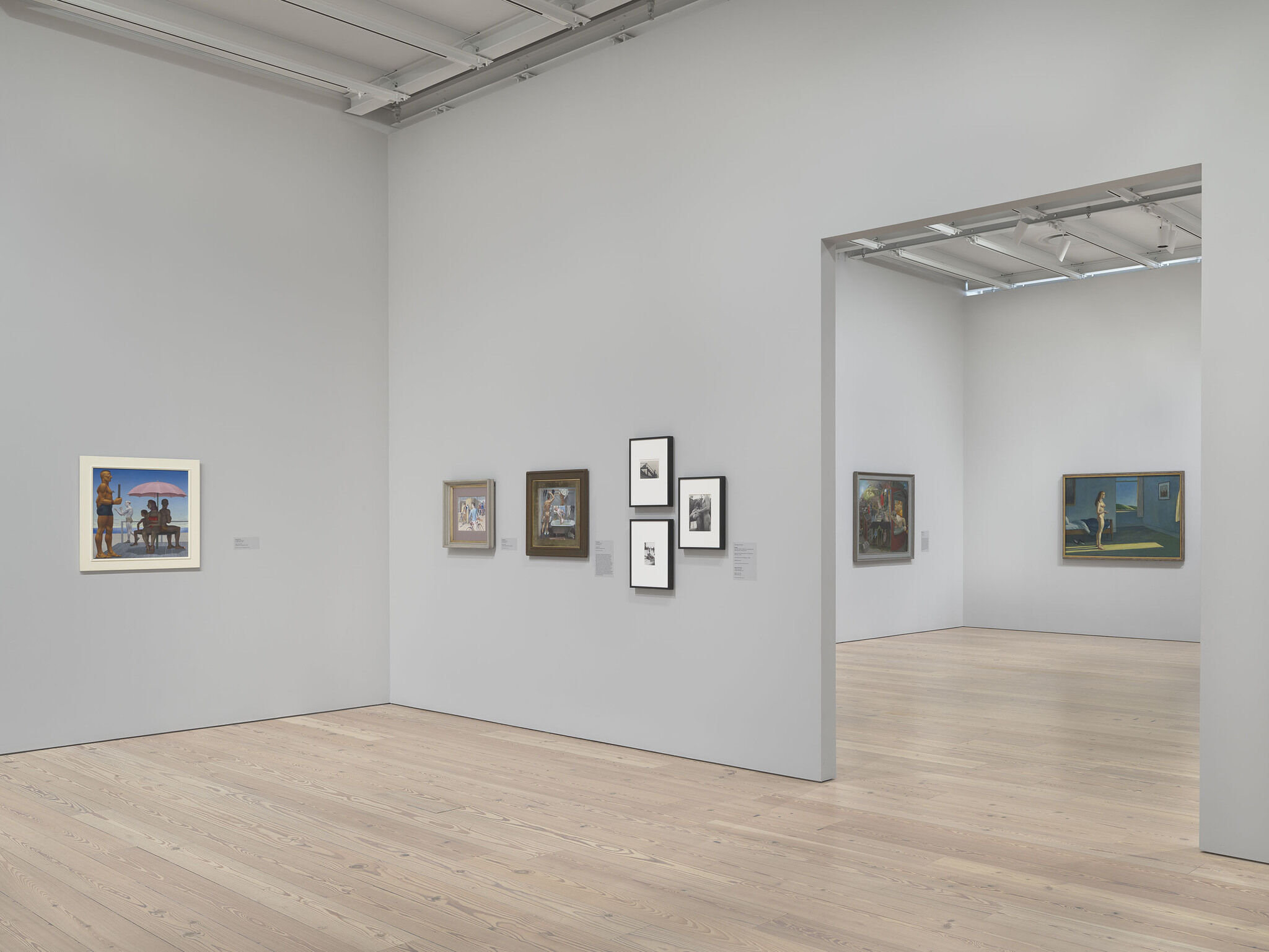

Installation view of Where We Are: Selections from the Whitney’s Collection, 1900–1960 (Whitney Museum of American Art, New York, April 28, 2017–June 2, 2019). From left to right, top to bottom: Jared French, State Park, 1946; Paul Cadmus, Finistere, 1952; Paul Cadmus, The Bath, 1951; PaJaMa, Margaret French, George Tooker and Jared French, Nantucket, c. 1946; James Van Der Zee, Atlantic City, 1930; PaJaMa, Chuck Howard and Ted Starkowski, 1953; Henry Koerner, Mirror of Life, 1946; Edward Hopper, A Woman in the Sun, 1961. Photograph by Ron Amstutz
From the exhibition Where We Are: Selections from the Whitney’s Collection, 1900–1960
-
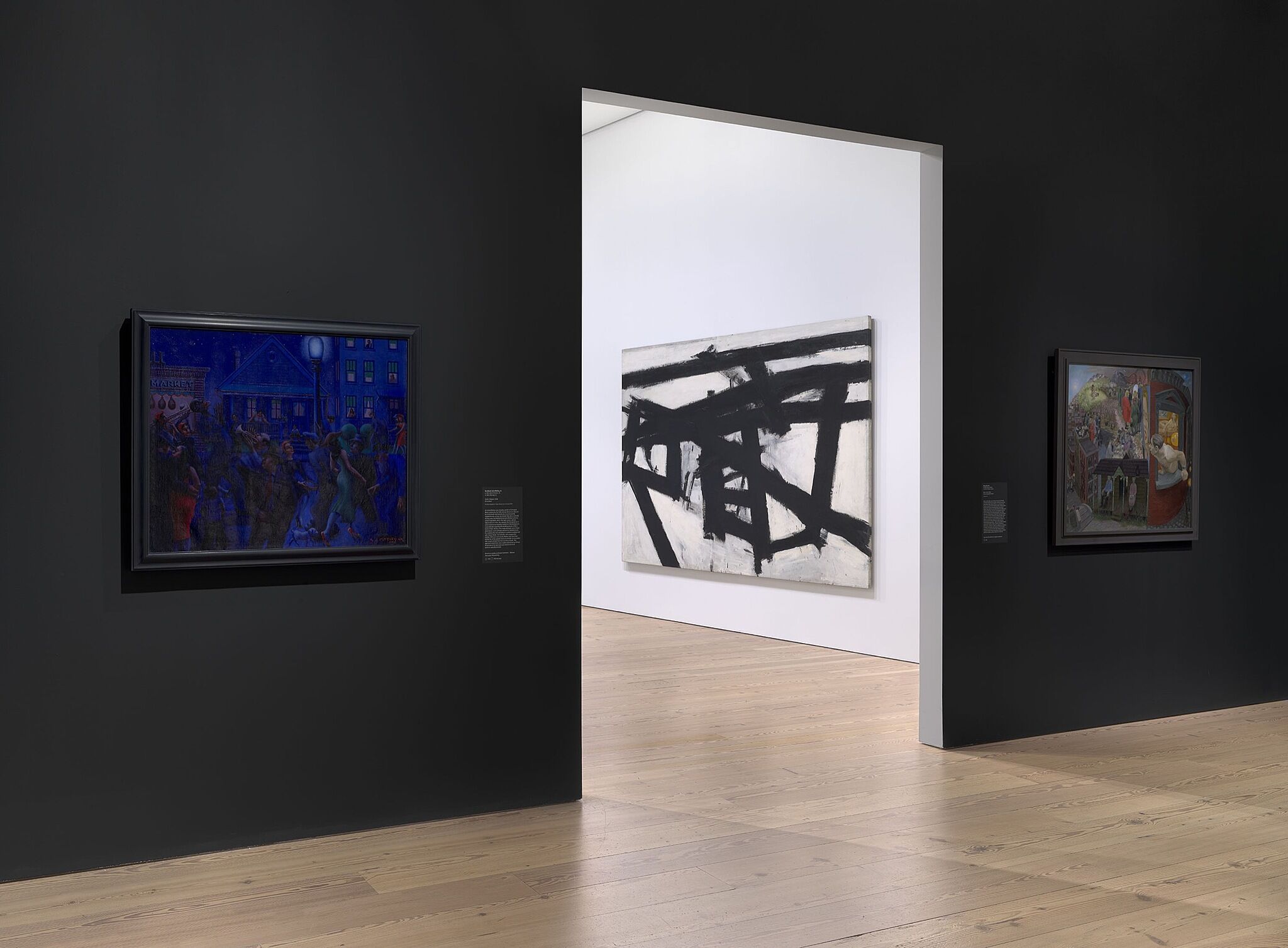

Installation view of The Whitney’s Collection: Selections from 1900 to 1965 (Whitney Museum of American Art, New York, June 28, 2019- ). From left to right: Archibald John Motley, Jr., Gettin’ Religion, 1948; Franz Kline, Mahoning, 1956; Henry Koerner, Mirror of Life, 1946. Photograph by Ron Amstutz
From the exhibition The Whitney’s Collection: Selections from 1900 to 1965

